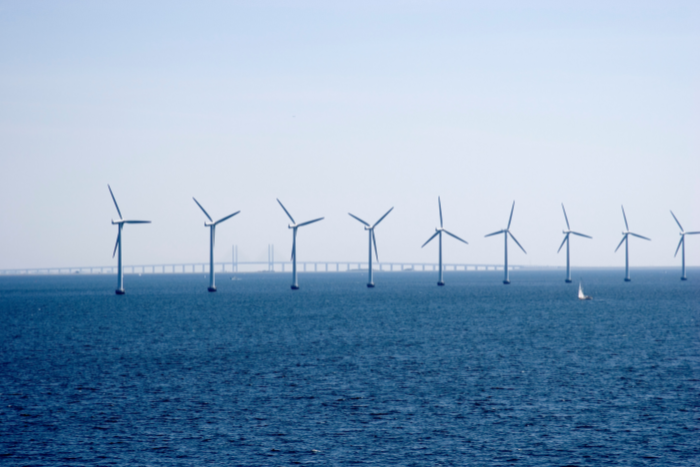Asia and Europe together made up 99.9% of total global offshore wind capacity, says the report
China led the world in annual offshore wind developments for the sixth year in a row with 6.3 GW added in 2023, according to the new report by the Global Wind Energy Council (GWEC). Globally, the wind industry installed 10.8 GW of new offshore wind capacity in 2023, taking the global total to 75.2 GW. New capacity increased 24% on the previous year—a growth rate which could continue up to 2030, if the present increase in policy momentum continues, said the report.
By the end of 2023, 41 GW and 34 GW of offshore wind capacity were in operation in Asia and Europe respectively. The two regions combined made up 99.9% of total global offshore wind capacity.
The report forecasted that in the next ten years, 410 GW of new offshore wind capacity will be installed, bringing offshore wind deployment in line with global targets to install 380 GW by 2030. The majority of that will come at the turn of the decade, with two-thirds installed between 2029 and 2033.
Annual offshore wind installations are expected to triple in 2028 from 10.8 GW in 2023, the report estimated. By 2033, they are expected to reach 66 GW, bringing the offshore share of new wind power installations from today’s 9% to at least 25%.
This anticipated growth will be driven by the arrival of the next wave of offshore wind markets like Australia, Japan, South Korea, the Philippines, Vietnam, Brazil, Colombia , Ireland and Poland.
Rebecca Williams, chief strategy officer, offshore wind, GWEC, said, “This new wave of offshore wind markets are taking notice and making progress of their own, in some cases outgrowing the ‘emerging’ label thanks to strong collaboration between industry and policymakers. It is vital to continue that cooperation, particularly in this year of significant elections around the world, to ensure targets become turbines and more markets develop in the wake of this decade’s expansion.”
In focus: India
Currently ranking fourth globally with over 45 GW installed wind capacity, India is pushing forward with ambitious goals, the report noted. By 2030, India plans to achieve a cumulative 140 GW installed wind energy capacity.
The Ministry of New and Renewable Energy (MNRE) aims to harness an estimated 70 GW of offshore wind energy capacity off the coasts of Gujarat and Tamil Nadu, highlighting the strategic importance of this resource in India’s energy landscape.
The National Offshore Wind Energy Policy, notified in 2015, lays the groundwork for the strategic and comprehensive development of offshore wind projects up to the country’s Exclusive Economic Zone, which extends 200 nautical miles from the coastline. India’s strides towards operationalising its offshore wind capacity are marked by the issuance of its first offshore wind seabed lease tender.
The report said that the notification of India’s “Offshore Wind Energy Lease Rules, 2023,” further supported this initiative by regulating the allocation of sea blocks to developers, thereby ensuring a structured development pathway. The success of tenders floated by the government in the current financial year shall mark the opening of a new offshore wind market in the region.
Global Growth Framework for Offshore Wind
According to the report, there is still an implementation gap between declared targets and the rate of annual installations. The areas of permitting, finance (inflation and increased capital costs) supply chain, and grids will remain key for forecast growth to materialise, and to propel offshore wind power development into a new phase of even faster growth.
Therefore, the report outlined a “Global Growth Framework for Offshore Wind” for industry and governments planning to rapidly scale up development covering finance, demand and industrial offtake, supply chain development, permitting, social consensus, workforce development and grid infrastructure.
The report said that forecasted growth is at risk if this framework is not implemented.
About The Author
You may also like
Non-Fossil Fuels Generates One-Third of India’s Electricity in 2025
India on track to achieve 2030 clean energy target
Investing in solar, storage can save Thailand close to $2 billion: Report
India to add 45GW solar capacity in FY 2026: Study
Government Proposes for ALMM Expansion for Solar Backward Integration

